Pizza craftsmanship is something every pizza lover takes seriously. That means considering every aspect, from forming everything from scratch to its cooking method. And while the toppings are considered the superstars, it’s the cooking methods that complete the show.
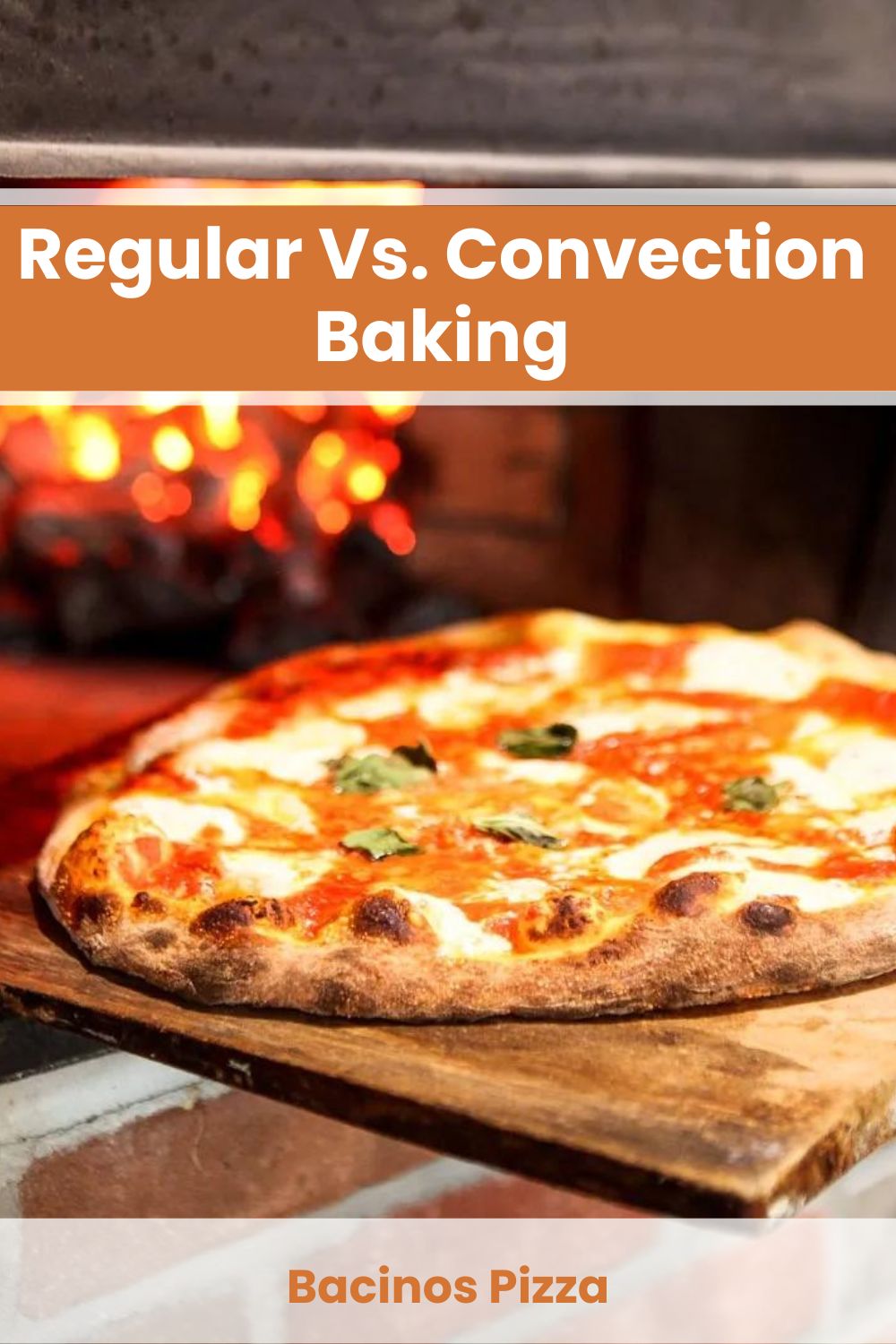
Regular baking vs. convection baking? Which method do you think creates the perfect pie? Today, we will delve into the different dimensions that set these two apart. We also included other factors to consider when choosing a method and tips to keep you on your A-game.
If you want to know more, keep your pizza slice on hold and let’s start learning.
Regular Baking vs. Convection Baking: Quick Overview
Before we get into the detail, let’s look first into the summary difference between the two methods:
| Regular Bake | Convection Bake | |
| Heat Source | Bottom heating element | Has an exhaust system and a fan |
| Distribution | Cooks outside in | Circulate heat evenly, preventing hot spots |
| Temperature | 300°F to 500°F | 300°F to 550°F |
| Cooking Time | Longer | Shorter |
| Energy Efficiency | Less energy-efficient | More energy-efficient |
| Pizza Quality | Less crisp crust; toppings need extra cooking time | Cripsier crust; toppings are more browned |
Understanding Regular Bake
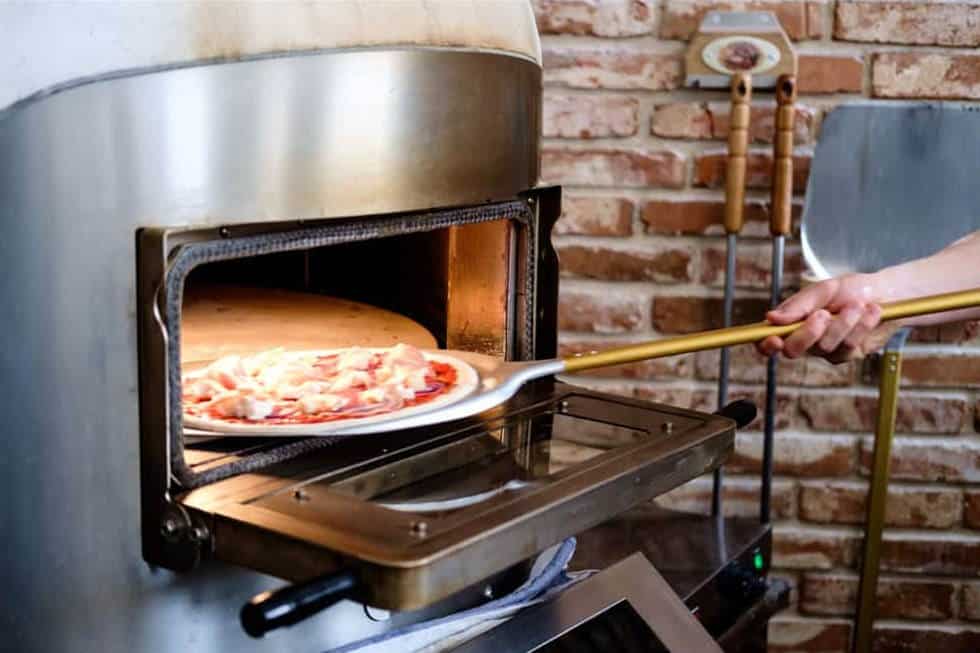
From the name itself, a regular bake provides a forthright function for baking goods. The pizza sits atop a pre-heated stone and uses a conventional oven to bake. Its primary heat source comes from the bottom of the oven. It allows the heat to rise towards the top rack and circulate on the food periphery. That’s why hot spots are common in this type of setting.
Aside from it, a regular bake cooks from the outside in. That means a less crispy crust pizza with a soft inner base. In all, a good option if you want to keep it light and subtle. But before we settle with a conventional oven, let’s first see how a convection bake works.
Understanding Convection Bake
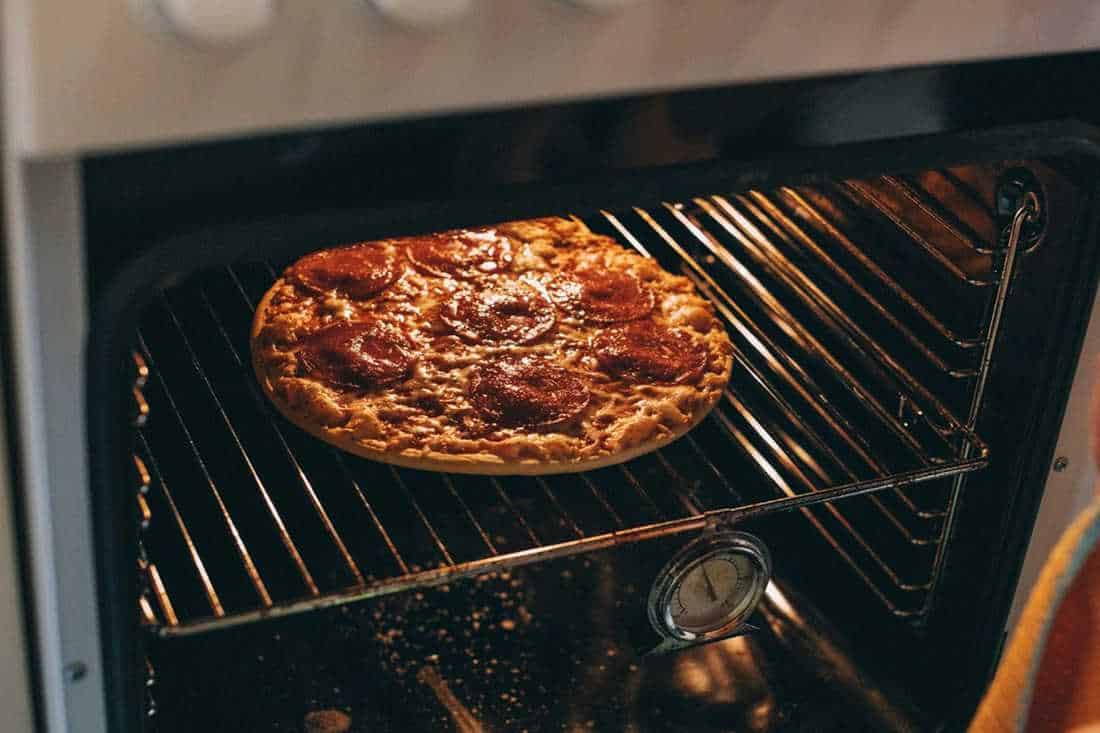
Convection baking is the improved version of a regular bake. It uses an exhaust system and a fan – sitting at the back of the oven – for a high-geared performance. With this setup, the heat distribution is even, allowing the air to circulate to prevent hot spots. Sounds efficient, right?
And while it gets the job done, there are still some precautions to achieve a perfect bake. Learn more about this as we share some tips later when using each method.
But for now, let’s first tackle the temperature, cooking, energy efficiency, and pizza quality differences.
Temperature Difference
With the more advanced parts, it is a no-brainer that a convection bake provides a higher heat temperature. But don’t get tempted to max out the heat setting if you want to prevent any cooking disaster!
According to experts, when using a convection oven, reducing the temperature by 25 degrees can help you adapt recipes made for conventional ovens. Of course, we don’t want a burned pizza coming out after thoughtful preparation. It would ruin the special moment!
Now moving on to the temperature discourse, is the convection method ideal for baking pizza?
Convection delivers constant temperature across the pie. Conversely, a regular bake setting leaves you with targeted heat. While it seems significant, there is some catch to the former – it can dry the pizza crust and burn the cheese if you’re unfamiliar with the techniques.
So, to prevent this pizza mishap, we laid out the necessary adjustment in the next section.
Cooking Time Difference
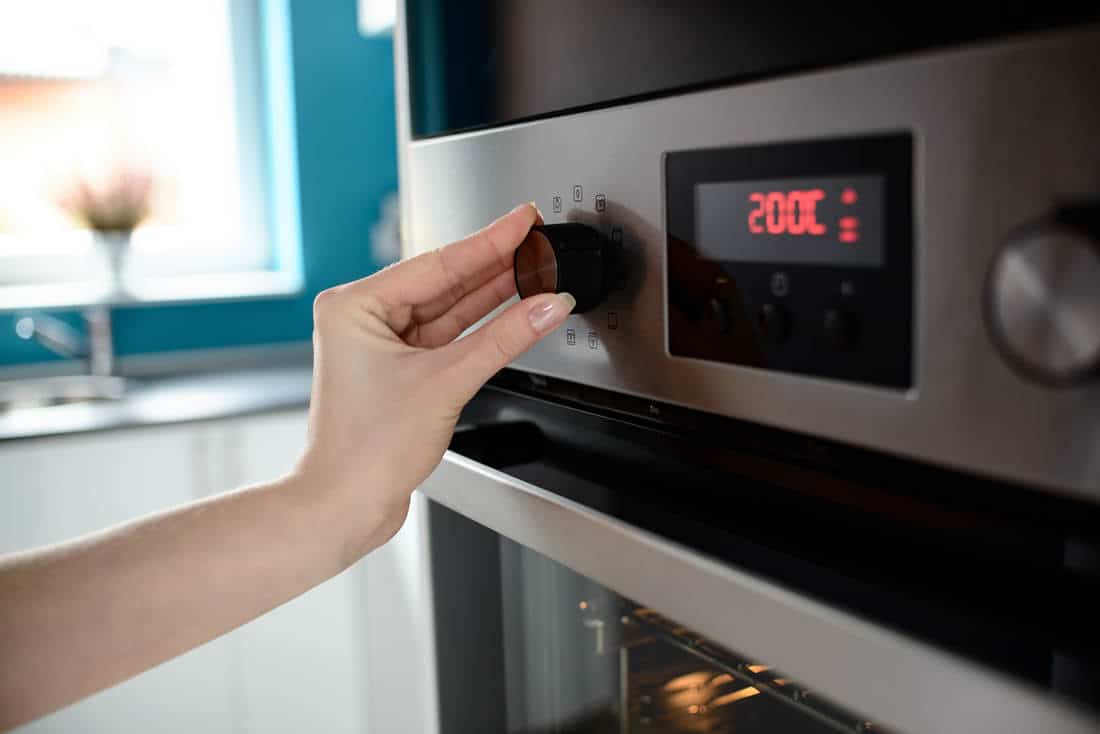
If you’ve tried baking pizza at home several times, you’ve probably heard of these basic rules:
- Higher temperature = shorter pizza cooking time
- Lower temperature = longer pizza cooking time
Let’s be honest! A convection oven is a clear winner if you don’t want to wait long to test your pizza. It preheats faster and cooks shorter than a conventional one. Perfect for those on the run or who need a quick dish for the family dinner.
But let’s not solely base it on how fast we can grab a slice. It is also essential to consider the crust thickness, toppings, and texture preference.
A thinner crust is ideal for a regular bake to prevent the crust from burning immediately. The low temperature and longer cooking time give the dough enough time to crisp up alongside the toppings.
Conversely, a thicker crust does well with a convection bake to achieve a crispy crust while keeping the center cooked evenly. It results in well-cooked toppings that are easier to slice. A bonus if you hate your pizza wheel pulling the cheese off the pie!
Energy Efficiency
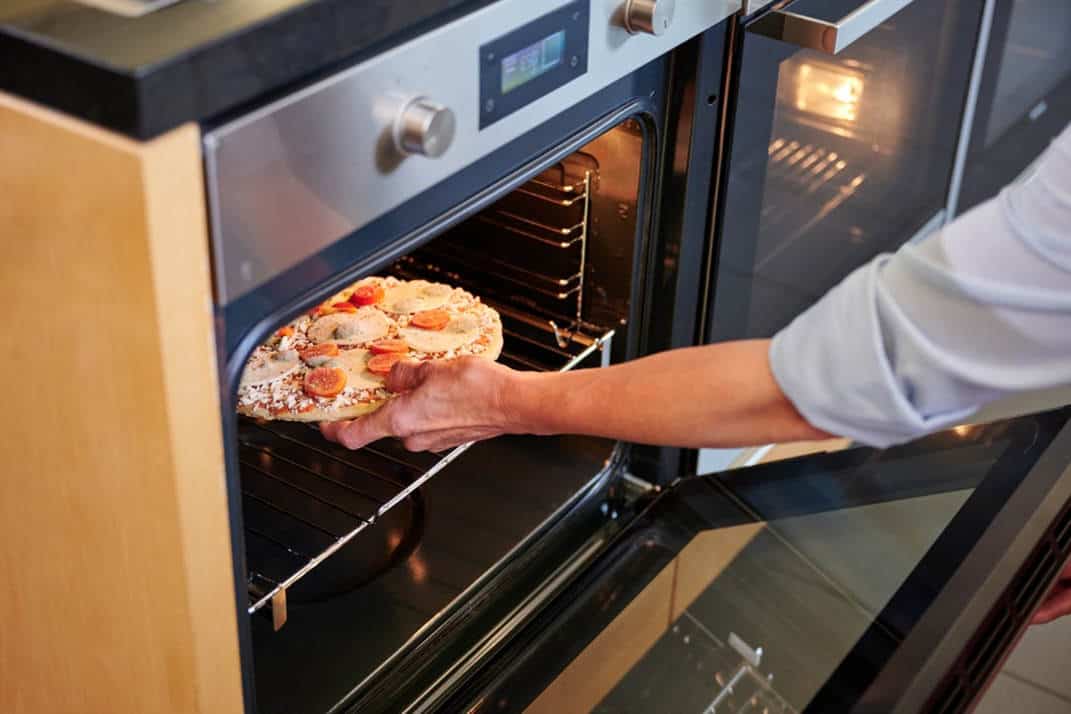
Are you planning to elevate your pizza-making experience with a new oven? Considering its energy efficiency might help you decide.
Convection ovens use 20% less energy than conventional ovens. Thanks to its constant airflow and shorter pre-heat time, it saves some bills on the pocket.
But how does it work, and what’s the mechanism behind it?
The convection bake cycle helps speed up baking through the help of exhaust and fan, which are not present in a regular bake. It is also multi-level baking, meaning you can fill the oven racks without affecting cooking time. A plus if you plan on baking many pizzas in one go.
With these features, you can expect it to be on the pricier side. Although, it will guarantee you a few bucks saved on your electricity bill. So, it’s all about investing in good equipment and taking advantage of its uses.
If you already have a regular oven, there are still ways to help you maximize its energy:
- Avoid constantly opening the oven door. We know it’s tempting to peek at the oozing cheese. But do restrain to prevent an internal temperature drop.
- Use a heat-conducting pan.Buy a steel or aluminum pizza pan to avoid extra baking time.
- Check your rubber gaskets. Ovens are sealed tightly but can wear out over time. To prevent hot air from leaking out, replace the gaskets when necessary.
Pizza Quality Difference
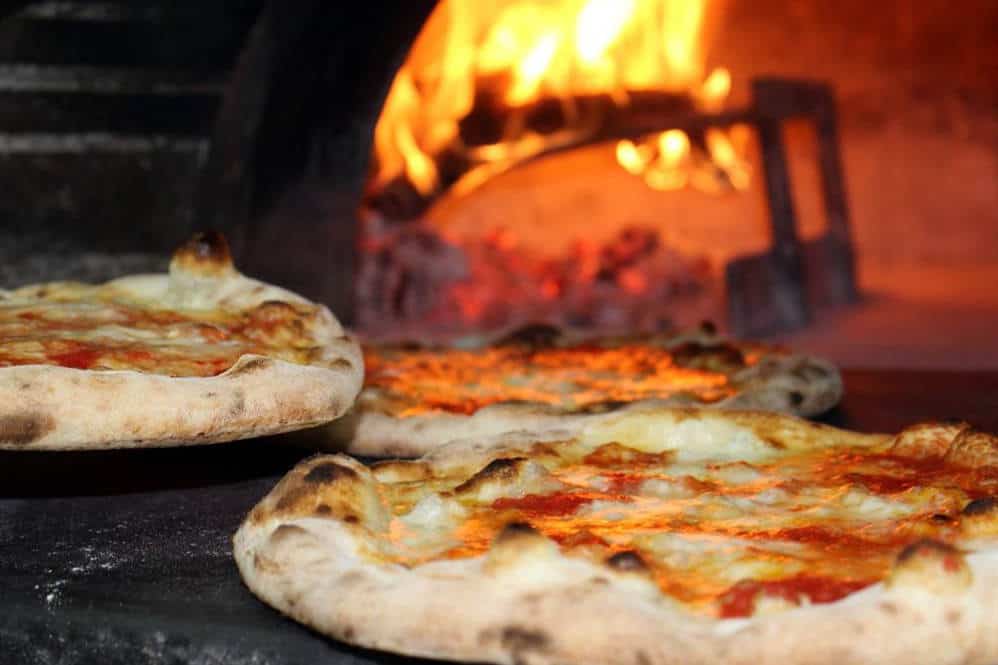
Finally, we’re on the most awaited section of this blog – the pizza quality!
With all the information you’ve absorbed just now, have you considered which method offers the best quality? Is it the regular bake cycle or the convection bake cycle?
The answer is: it depends on how you like your pizza cooked. Convection bake provides a crispier crust with brown and well-roasted topping. If you don’t like the charred taste, then the regular bake cycle is for you. It is also recommended for beginners since a convection bake is tricky to operate.
But if your oven has both bake settings, we recommend trying the two methods. That way, you can distinguish the cooking difference with your palate.
Factors to Consider When Choosing a Baking Method
Now, let’s round up all the factors, so you have a cheat sheet to look back at before baking.
| Regular Bake | Convection Bake | |
| Type of Pizza | Any pizza style will do; adjust the temperature and cooking time accordingly. | Any style, but frozen pizza should bake under the lowest temperature setting. |
| Crust Thickness | Thinner crust (preferably) | Thicker crust (preferably) |
| Toppings | Fewer toppings | More toppings |
| Texture Preference | Soft and chewy; needs extra baking time to achieve a crisp texture | Browned toppings and crispier crust texture, although it may come out dry |
Tips for Baking Pizza with Each Method
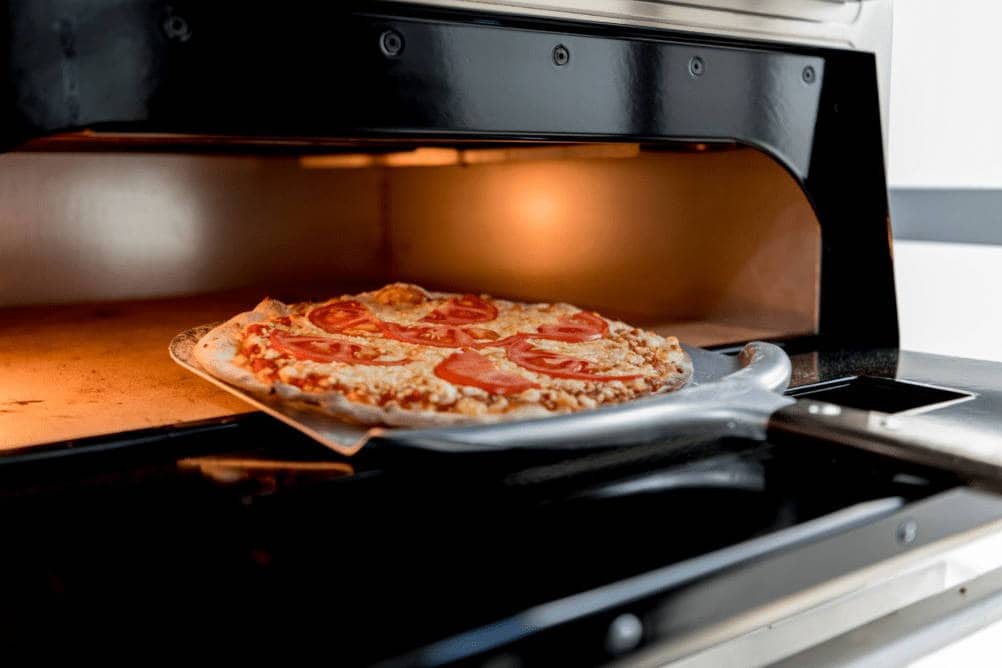
As promised, here are some tips to help you achieve a perfectly baked pizza.
Regular Bake Pizza
Undercooked pizza is typical in a regular bake setting. So to avoid this, here are some tips you should follow:
- Preheat the oven to around 350 to 400°F while preparing the pizza.
- Use a pizza stone to raise the temperature and to provide an extra-hot surface for the pizza to bake.
- Bake the pizza at around 350 to 400°F for 15 to 20 minutes. You can add extra five minutes if you want toasty cheese.
- Most importantly, rotate the pizza halfway through the baking to distribute the heat evenly.
Convection Bake Pizza
High heat makes pizza prone to getting dried and burned. To achieve a perfectly baked pizza using a convection setting, keep these tips in mind:
- Like a regular bake, a convection bake also requires preheating to the appropriate temperature.
- It is best to start with a high temperature (around 450 to 500°F). You can reduce the temperature slightly if necessary.
- The convection oven cooks faster than traditional ones. Be sure to check on your pizza to avoid overcooking it.
Learn how to use the pizza setting on a convection oven here:
Regular Baking Vs. Convection Baking: Which Method Is Better?
Both ways provide an excellent-tasting pizza once you master the art of using each method. Some might find regular bake easier to perform. Others may prefer the quick baking time of a convection oven.
Crispy toppings are seamlessly achievable with the latter. But taking extra time on the former provides the same result. If you already have a traditional oven, it is best to maximize its potential. But if you’re on the search in the market, then take each category as your checklist to arrive at a decision.
Take Away
To new home cooks, professional bakers, and keen learners:
We hope you got learning points from this regular baking vs. convection baking pizza article. For future reference, you can keep this on the tab so you have table summaries to remind you before baking.
And if you tried out any of these methods, feel free to share your experiences in the comment section below. Happy baking and exploring, everyone!

Barbara is an enthusiastic food-exploring person that goes through different culinary experiences. She got inspired by creating a pizza blog post after she tasted one of the best-selling pizzas in Toledo.